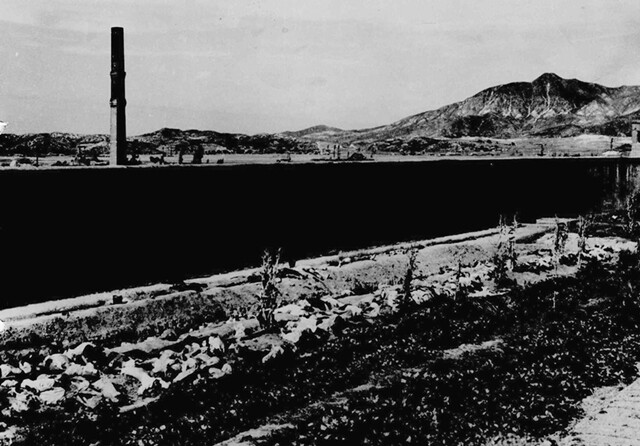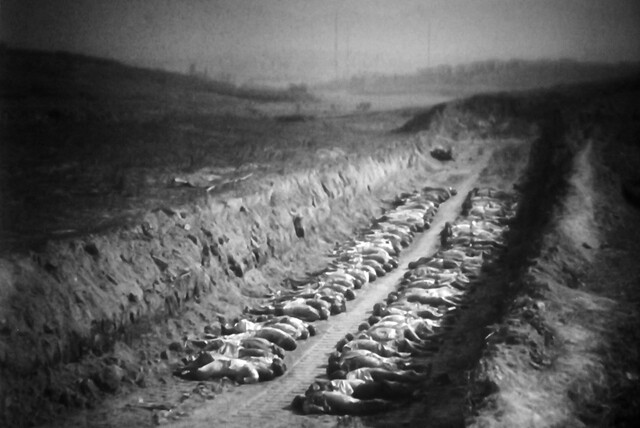23 July, 2024
In a staggering revelation that reads like a dark chapter from a dystopian novel, the Associated Press uncovered that shortly after the Korean War erupted, South Korean troops and police, under the tacit approval of the U.S. military, executed leftists and sympathizers en masse. This wasn't just a few isolated incidents, but a widespread atrocity, meticulously documented and reported on July 5, 2008, by the AP.
Declassified records from the U.S. National Archives and other sources paint a chilling picture: U.S. military officers didn't just know about these mass executions—they were there, watching, filming, and reporting back to their superiors. Imagine the moral bankruptcy it takes to stand by with a camera while innocent civilians are slaughtered, all in the name of anti-communism. It is estimated that at least 100,000 leftists and sympathizers were executed without any semblance of legal process in the early weeks of the Korean War.
Jung Byung-joon, a professor at Ewha Womans University, aptly summarized the grotesque complicity: “The most important fact is that the U.S. military did not stop the executions. They were at the scene of the crime, taking pictures and writing reports.” This isn't just passive observation; it's active participation in a crime against humanity.

Massacred bodies near the wall of Daejeon Prison. Prepared by the U.S. Military War Crimes Investigative Service, KWC 28C. Courtesy of Dukjung Kim
Just five years after the Allies stood victorious over the evil regimes of Nazi Germany and Imperial Japan, the U.S. military found itself turning a blind eye—or perhaps even encouraging—similar atrocities in Korea. General Douglas MacArthur, the grandiose commander of U.S. forces in the Far East, should be remembered not as a war hero, but as a moral coward who did nothing to stop these massacres. The U.S. military's filming of the mass executions outside of Daejeon stands as a testament to this profound moral failure. This brings to mind the biblical tale of Pontius Pilate, who washed his hands of responsibility for the crucifixion of Jesus, claiming, “I am not responsible for the blood of this man” (Matthew 27:24).
A woman whose grandfather was executed during these massacres poignantly stated, “We don't have concrete evidence, but we, the bereaved families, feel that the United States bears some responsibility.” And how could they not? Frank Winslow, a U.S. military advisor in Daejeon at the time, laughably claimed that “all the blame lies with the Koreans” because South Korea was a sovereign nation. This is the kind of excuse that only serves to highlight the U.S.'s moral evasiveness. Winslow also admitted he declined an invitation to witness a “turkey shoot,” yet acknowledged that other officers attended and took horrific photos that remained classified for decades.
Let’s not forget, South Korea had barely been a republic for two years and was essentially under U.S. military rule until then. To argue that the U.S. bore no responsibility for these actions is both historically and morally indefensible.
In early July 1950, as North Korean forces advanced, U.S. Air Force intelligence officer Donald Nichols witnessed and filmed the execution of approximately 1,800 prisoners in Suwon, Gyeonggi Province. Even after Seoul was recaptured in the fall of 1950, the U.S.'s ambiguity continued. When the British protested the massacres, Dean Rusk, then U.S. Assistant Secretary of State, feebly claimed that U.S. commanders were doing everything they could to stop the atrocities. This was nothing more than a feeble attempt to whitewash their inaction.
Bruce Cumings, a professor at the University of Chicago, didn't mince words: “After thousands were slaughtered, the U.S. not only did nothing, it hid the massacre. The U.S. is responsible for what happened in Korea in 1950.” Washing their hands of this dark chapter in history doesn't absolve the U.S. of its responsibility. The stain of these actions and inactions will forever mar the legacy of those who stood by and did nothing while thousands were murdered.
Here we have the news article link of AP dated July 5, 2008.


